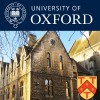Travelling Santas, Circulation and Formation of ‘the Multilingual Local’ of World Literature in the early modern Marathi
Though bhakti is often understood as criticism of rituals like the pilgrimages, travelling as part of pilgrimage (tirth-yatra) or religious travel (parikrama or bhrman) has played an essential role in circulation of bhakti tropes, ideological beliefs, genres, and texts in the trans-regional vernacular sphere in South Asia. While the nativist understanding of bhakti assumes that it was as assertion and celebration of monolingual desi identities in opposition to the hegemony of Sanskrit ‘margiya’ traditions, South Asian scholars like Sheldon Pollock see it as a part of the process of ‘vernacularization’, or “the historical process of choosing to create a written literature, along with its complement, a political discourse, in local languages according to models supplied by a superordinate, usually cosmopolitan, literary culture” (1998). Furthermore, postcolonial travel studies very often have limited themselves to the East-West travels, and do not pay significant attention to intra-South Asian travel practices before colonialism.
The paper argues that the experiences of trans-regional travelling to other ‘deshas’ in South Asia by influential Marathi composers such as Namdev (late 13th and early 14th century), Eknath (late 16th century) and Ramdas Swami (mid-17th century) have played a critical role in not only shaping not only their own poetics and cultural politics, but also contributing to significant cultural change in the society. Apart from composing in the north Indian languages and establishing ‘santa’ tradition in the north, Namdev is credited to have introduced ‘nirguna bhakti’ to Marathi by some scholars, and Eknath, who often visited Varanasi, wrote the first important Marathi Ramayana, thus inaugurating a strong Rama bhakti tradition to which Ramdas Swami belongs. According to some hagiographies, Ramdas is believed to have been inspired by more militant devotionalism of the sixth Sikh Guru, Guru Hargovind whom he is believed to have met at Srinagar, Kashmir and stayed at the Golden Temple at Amritsar. After his travels, he is believed to have composed works such as ‘Asmani Sultani’ and an early modern Hindu patriotic utopia named ‘Anandwan Bhuwan’.
These inter-vernacular experiences produced what Durisin (1984) terms as ‘genetic contactual interliterary relations’ that would profoundly impact the development of Marathi literary tradition by establishing a multilingual vernacular hagiographical canon of bhakti by the eighteenth century that would include santas like Kabir, Dadu and Narsinh Mehta, among others, thus creating ‘the multilingual local’ to use Francesca Orsini’s term in a different context, in early modern Marathi (2015). Understanding this inter-vernacular circulation of the santas complicate the conventional understanding of precolonial south Asian vernacular literatures and cultures based on simplistic and vertical binaries of the Sanskrit cosmopolitan margiya and the parochial desi, as well as the notions that the vernacular compositions were derivatively modelled upon the superordinate Sanskrit cultural forms. It also complicates the modern and monolingual nativist reading of the cultural history of the subcontinent. While the conventional conceptualization of world literature has often understood ‘the world literature’ in opposition to ‘the national literature’, more recent theoretical paradigms of world literature that emphasize circulation (Damrosch) and histories of larger interliterary processes (Durisin) allow us to read ‘bhakti’ literature as a world literary phenomenon.




